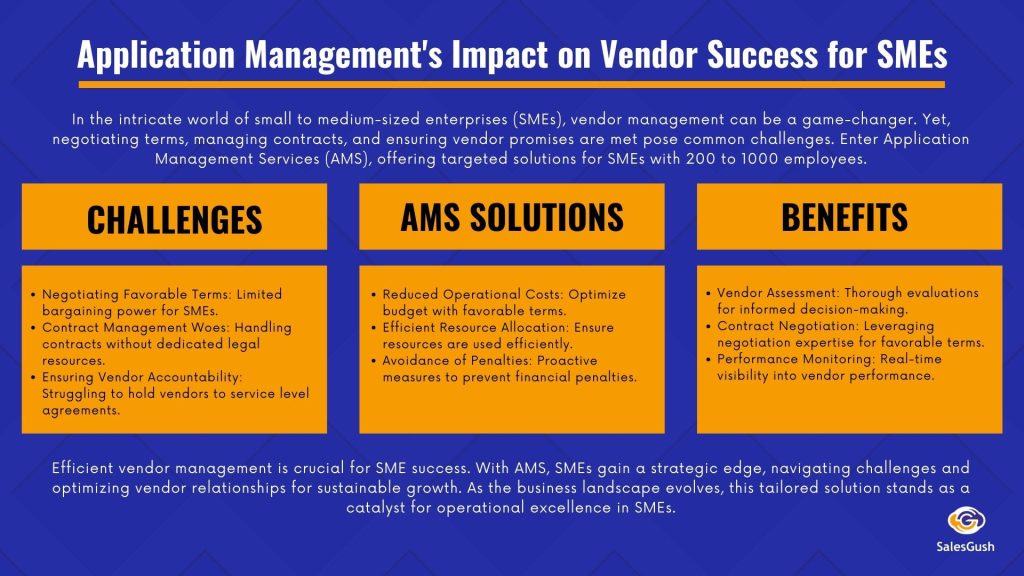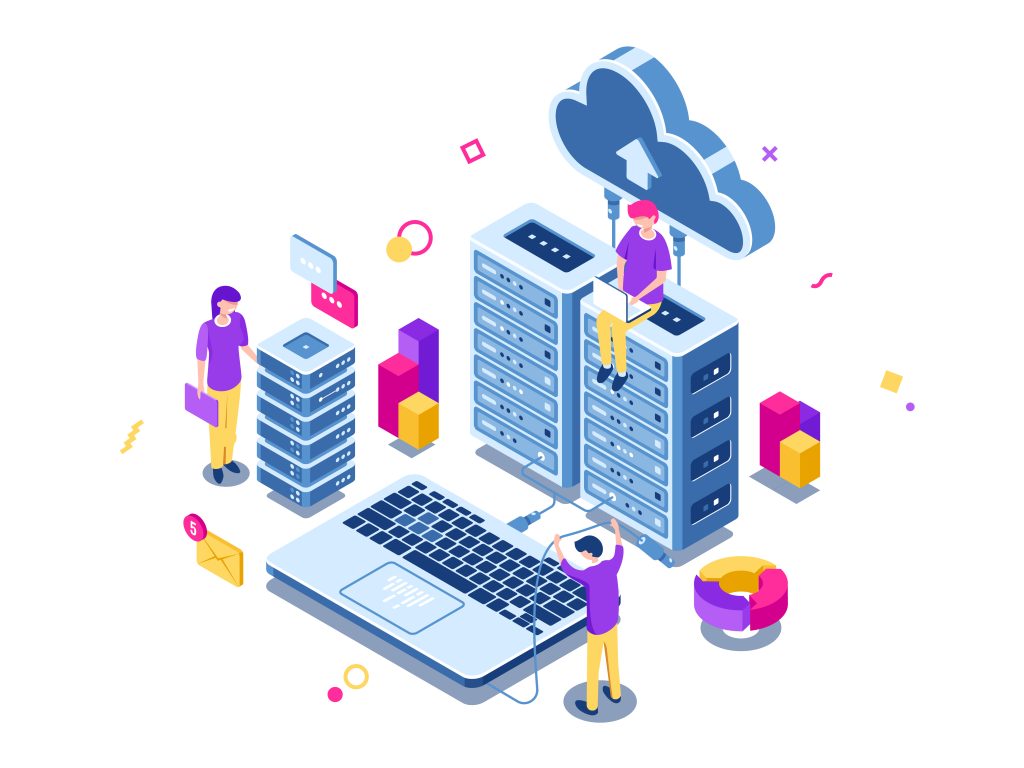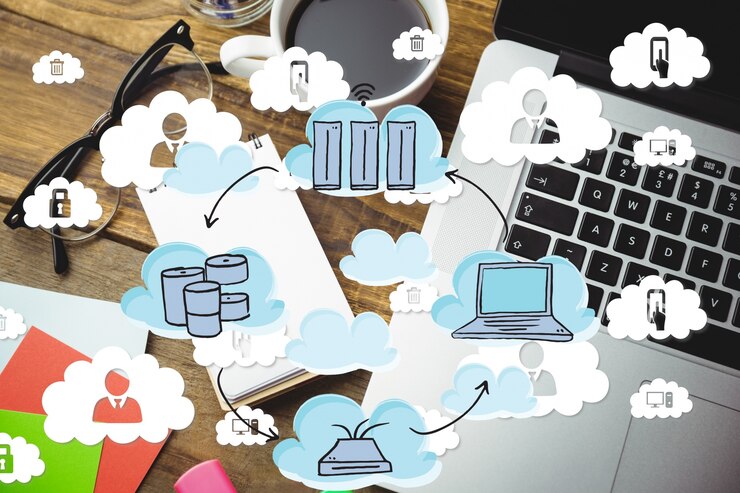Small and medium-sized businesses (SMEs) frequently struggle with the difficulties of vendor management in the complicated dance of corporate operations. The ability to manage contracts, negotiate advantageous terms, and make sure vendors fulfill their commitments are all difficulties that can have a big effect on the bottom line. So, this is where specialized Application Management Services (AMS) come in, providing focused solutions to meet the particular requirements of 200–1000 employee SMEs.
Common Challenges in Vendor Management for SMEs:
1. Negotiating Favorable Terms:
- Problem: It may be difficult for SMEs to negotiate advantageous terms with vendors because they do not have the same negotiating leverage as larger businesses.
- Solution: AMS carefully evaluates each possible partner’s performance, dependability, and fit with the company’s goals before moving on with a vendor review. Equipped with this knowledge, talks take on a strategic and targeted approach, guaranteeing that SMEs obtain the best conditions.
2. Contract Management Woes:
- Problem: Contract management can be a complex process, particularly for smaller companies without in-house legal counsel.
- Solution: AMS assumes responsibility for managing contracts, guaranteeing that they are lucid, enforceable, and in line with the SME’s best interests. So, to minimize legal complications, ensure contractual compliance, and adjust to evolving company realities, regular evaluations and modifications are carried out.
3. Ensuring Vendor Accountability:
- Problem: Inefficiencies and discontent may result from SMEs’ inability to hold vendors responsible for service levels and deliverables.
- Solution: Strong performance monitoring tools are put in place by AMS, which tracks vendor performance about predetermined Key Performance Indicators (KPIs). Hence, this real-time evaluation promotes an accountable and transparent culture by ensuring that vendors fulfill their obligations.

Tailored Application Management Services for Vendor Management:
1. Vendor Assessment:
- Service: Perform in-depth analyses of possible suppliers, focusing on their qualifications, experience, and fit with the company’s requirements.
- Benefits: SMEs obtain important information on the dependability and effectiveness of vendors, facilitating well-informed decision-making and lowering the risk of collaborating with failing organizations.
2. Contract Negotiation:
- Service: using negotiating skills to get vendor contracts with advantageous terms and circumstances.
- Benefits: SME budget optimization and vendor partnerships that support their operational objectives are achieved through cost reductions and advantageous contract terms.
3. Performance Monitoring:
- Service: Putting in place sophisticated monitoring systems to monitor vendor performance about predetermined metrics.
- Benefits: By having real-time access to vendor performance, SMEs can quickly resolve problems and also, make sure that services continuously live up to expectations.
The Cost-Saving Advantage:
1. Reduced Operational Costs:
Businesses can save money by avoiding unneeded expenses related to bad terms and underperforming vendors by maintaining optimized vendor relationships.
2. Efficient Resource Allocation:
AMS ensures the effective distribution of resources, preventing overspending on services and making the most use of given monies.
3. Avoidance of Penalties:
- Financial fines linked to vendor underperformance or contract violations are avoided by SMEs with the use of proactive monitoring and accountability procedures.
Conclusion:
A key to success in the complex fabric of SME operations is effective vendor management. Also, businesses with 200–1000 employees can manage contracts, negotiate with vendors, and ensure accountability by using the specialist services of an Application Management Service. The end product is a simplified and economical vendor management plan that enhances the SME’s overall performance. Hence, the partnership between SMEs and AMS providers is proof of the effectiveness of customized solutions in attaining operational excellence and sustained growth as the business landscape changes.







